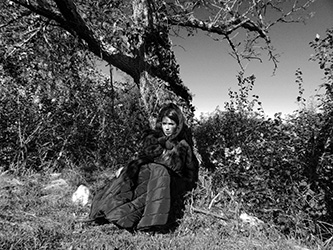During the first two months of the course, the 2nd year students of Degree at design worked on the project 'CONSOLIDATION / BODY: Traditions and contemporary design '. From October 22 to 24, the results of this exercise were exhibited in the exhibition 'Echoes of Origin'. Isabel Bonilla, student of Degree, shares with us the sources of inspiration that guided their work Trashumantes, as well as the objectives, proposals and the process that led them to their final results:
 "The project was based on the detailed study of a Hispanic tradition, in order to then be able to reinterpret it respectfully, creating a contemporary version without losing sight of current needs. The materials provided for the work were only two: New Memory and BennettBoth were black in color, and each student was to select the material that best suited their vision of project.
"The project was based on the detailed study of a Hispanic tradition, in order to then be able to reinterpret it respectfully, creating a contemporary version without losing sight of current needs. The materials provided for the work were only two: New Memory and BennettBoth were black in color, and each student was to select the material that best suited their vision of project.
This project can be understood from the idea of romanticism and folklore that so much valued these traditions and popular costumes, and that positioned Spain on the European map back in the eighteenth century, as a lure for artists in search of inspiration.
We chose to investigate in a small village in Soria, called Villaciervos, in order to soak up the pastoral tradition, where the man-animal relationship was very close, sharing trips throughout the plateau during the transhumant period, and home during their return home. We were struck by their popular costumes, especially a curious white cape with an outstanding color and a peaked cap, which impressed renowned personalities such as Ortiz Echagüe, the Bécquer brothers, Sorolla, Zuloaga...
Probably, what has helped us the most, and the tool we have used the most, is to know and understand in depth the functionality with which the garments were created and the specific use of each one. How necessary it is today, moreover, to focus on conscious creation and propose sustainable designs that encourage the public to buy for use and durability, without losing sight of aesthetics, but with our feet on the ground and thinking about how our decisions affect the world around us, either immediately or considering the future and the impact we want to create.
As I mentioned before, the shepherds were transhumant, traveling for long periods of time in search of green pastures depending on the time of the year. Sometimes they had a roof to sleep under, but in many cases they had to sleep outdoors. That is why our first proposal is a cape with wadding and waterproof material, diagonally quilted to simulate the movement of the cape, and with a length that does not drag, but covers up to the ankles. It is equipped with three zippers: a central one that leaves room for the neck and two side zippers for the arms, all three being reversible. Protection and functionality are the instructions where this intervention is based, with similar purposes to those of the white Villaciervos cape.
Secondly, we created a multi-positional garment, inspired by the capes that evolved from the white cape, which we have reversed in a series of variations within the same piece. We also explored the movement and drape of the original cape.
 In my opinion, the most complex thing is to find the tradition with which to connect deeply. Another obstacle is that many traditions lack documentation, although thanks to the Bécquer brothers, it was easy for us because of their writings and portraits, since Soria was not a popular province at that time for documentation.
In my opinion, the most complex thing is to find the tradition with which to connect deeply. Another obstacle is that many traditions lack documentation, although thanks to the Bécquer brothers, it was easy for us because of their writings and portraits, since Soria was not a popular province at that time for documentation.
Another challenge is to achieve coherence between the concept, the story, and the creation. There are moments when many ideas come to you and you have to organize them, and others when you get blocked and the most sensible thing to do is to take a step back.
Some complementary subjects had already shown me the relevance of tradition for evolution, as well as its charm and interest; but nothing compares to carrying it out with your own hands. Much of my work has been based on reading and understanding, which leads me to question how we deal with the present. Perhaps it would be wiser to stop for a moment and look at our ancestors. Especially in our degree program, which calls for acting ethically and creating in a way manager".
Text written by: Isabel Bonilla, student of Degree at design.